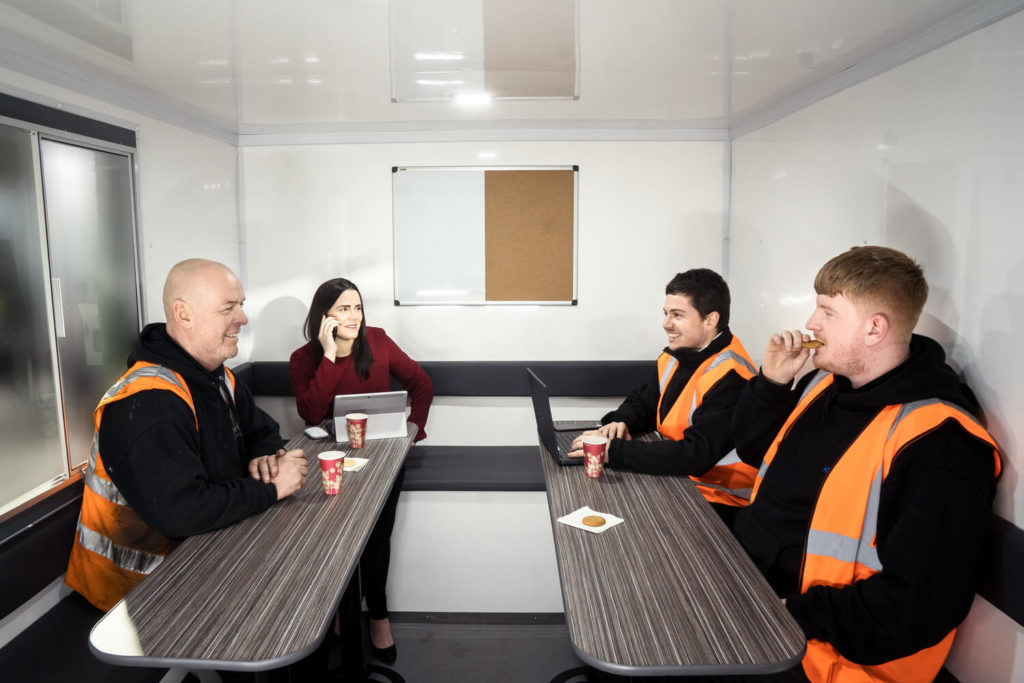Street lighting is a vital part of the UK’s public infrastructure, and experts argue it could help contribute to a safer, greener future for the country. But the industry faces a number of tough problems in the coming years¹, from managing budgets to sourcing the right vehicle mounted access platforms.
In this article, we explore five key challenges that contractors must understand and tackle if they want to thrive in 2022 and beyond:
1. Budget management
Given that the UK government’s National Infrastructure and Construction Pipeline has promised £650bn for infrastructure schemes over the next decade, we might assume budgeting is going to be less of a problem in the coming years. But this overlooks two challenges.
First, public finances are under unprecedented pressure – and that means tough decisions are on the way. Projects which are deemed to be economically inefficient or lack a clear Return On Investment will likely be the first to be shelved.
Second, contractors often overlook ways they could improve their budgeting efficiency. For example, by switching to a leasing model for their Vehicle Mounted Access Platforms, many firms could gain far greater control over their spending – and make themselves a far more appealing proposition when bidding on contracts.
2. LED lighting
Street lighting typically consumes around 30% of a local authority’s budget², but this figure drops quite a bit if they have switched to LED lighting. It has been suggested that local authorities could save £100 million a year by making the switch³.
Another reason demand for LED street lighting has grown is climate change. LED lights offer 100,000 hours of light, compared to 15,000 from normal bulbs, presenting a huge opportunity to reduce energy usage and create more sustainable public infrastructure.
This helps explain why local councils have spent nearly £500 million installing LED street lighting since 2016⁴. Experts estimate the UK’s streets will be 100% LED lit by 2035⁵, but it is smaller, less well-funded areas that contractors should look to for the biggest opportunities.
3. Public safety
While LED lighting provides huge cost and climate benefits, it also presents challenges in terms of reliability. In London, by far the most advanced area in terms of LED adoption, nearly 1,500 complaints have been made relating to street lighting since 2016⁶.
This speaks to a larger issue of public safety. Recent studies have found that well-lit street can reduce crime by 36%⁷, meaning street lighting is not just a tick-box compliance exercise but a potential means of improving the safety and wellbeing of local populations.
Street lighting contractors have a responsibility to help local authorities make better use of street lighting as a means of improving safety. Doing so will not only fulfill social responsibility, but help contractors build better relations with their customers.
4. The Internet of Things (IoT)
Urban planners and local authorities are empowered by greater volumes of high-quality data. Smart, connected street lighting could be an unparalleled source of real-time information for them in the future, enabling everything from monitoring traffic to enabling more efficient energy usage.
Making this a widespread reality will require a great deal of innovation and investment. Street lighting contractors and manufacturers should champion this approach, making the case for better connected, technologically empowered systems.
A government report from June raised security concerns as a major roadblock to implementing smart street lighting technology⁸. The report asked for additional guidance on security matters, and those in the industry that are able to help resolve these concerns will likely position themselves well for future opportunities.
5. Reliability
Finally, street lighting contractors face a challenge ensuring they are able to deliver projects on time and budget reliably. The construction industry as a whole has developed a reputation for delays and budgetary problems, and overcoming these issues will help contractors win
One factor to consider is procurement: plenty of problems arise not because of the contractors themselves, but a lack of transparency or reliability in the supply chain. Ensuring key equipment like vehicle-mounted access platforms are on-site when needed is vital to keep things ticking along and stay on target.
Contractors should therefore consider who they partner with – their reputation, delivery model and capacity. At Access Hire, we operate the UK’s largest, most reliable fleet of vehicle mounted access platforms, and with fully inclusive maintenance and support, we help our street lighting customers deliver reliable results every time.
2.https://www.openaccessgovernment.org/safer-streets-uk-lighting-crime-energy-net-zero/138727/
3.https://www.facilitatemagazine.com/news/2018/09/12/uk-street-lighting-market-set-17-value-growth-2022
4.https://www.thelightingsuperstore.co.uk/blog/post/energy-efficiency-in-the-uk-how-many-areas-are-converting-to-led-streetlights
5.https://www.thelightingsuperstore.co.uk/blog/post/energy-efficiency-in-the-uk-how-many-areas-are-converting-to-led-streetlights
6.https://www.thelightingsuperstore.co.uk/blog/post/energy-efficiency-in-the-uk-how-many-areas-are-converting-to-led-streetlights
7.https://www.openaccessgovernment.org/safer-streets-uk-lighting-crime-energy-net-zero/138727/
8.https://www.gov.uk/government/publications/the-smart-street-infrastructure-security-report/the-smart-street-infrastructure-security-report-executive-summary






